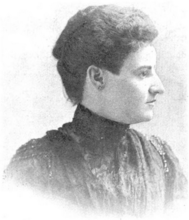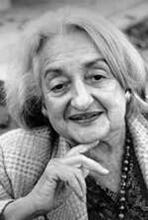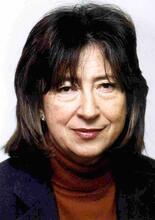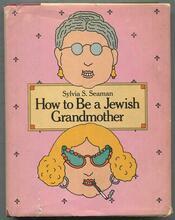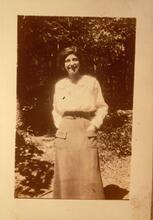Fay Ajzenberg-Selove
Fay Ajzenberg-Selove not only made significant contributions to physics, she also made huge strides for women by demanding she be judged on her merits, not her gender. Ajzenberg-Selove earned a PhD in physics from the University of Wisconsin, Madison, in 1952. Her most notable battle with sexism was in 1972, when the University of Pennsylvania denied her a tenured position, citing “inadequate research publications.” Thanks to her efforts, she became the second-ever tenured woman at the university. Despite these struggles and a long battle with cancer, Ajzenberg-Selove was praised for both her dedicated teaching and her contributions to nuclear spectrometry of light elements, earning a Guggenheim Fellowship in 1964 and the National Medal of Science in 2007.
Family and Education
Nuclear physicist Fay Ajzenberg was born in the Neubabel district of Berlin in 1926. Her beloved father, Moisei (Misha) Abramovich Aisenberg (c. 1890–1962), although born into a poor and pious Jewish family in Warsaw, had climbed out of poverty by being, in the words of his admiring daughter, “tough, smart and adaptable”—qualities which he displayed throughout the many vicissitudes of his life.
Misha had three brothers and two sisters, of whom one, Luba, was killed in the Holocaust. One brother died early in Poland, while one brother and two sisters moved to Palestine. One of the latter, Vera, married Leonid Doljanski, a physician at Hadassah Hospital, Jerusalem, who was killed on April 13, 1948, in an Arab ambush of the ambulance in which he and other Hadassah personnel were traveling.
With a scholarship from the Tsar, Misha studied mining engineering at the St. Petersburg Mining Academy and also became fluent in several European languages. His wife, Olga Naiditch, was born in Pinsk but when both her parents died she moved to St. Petersburg, where her brother Isaac had built a large business that produced alcohol.
Isaac was one of the early Zionists and had organized the self-taxation scheme to which Jews contributed to buy land in Palestine. His home was more traditional than that of Fay’s parents, who were—like herself—agnostics although they were also cultural Jews. In St. Petersburg Olga completed her secondary education and began studies at the Academy of Music. Though a talented pianist and fine mezzo-soprano, she was not interested in a musical career. Misha and Olga married very young. Their older daughter, Yvette (Iva), was born when they were both twenty-one.
The couple moved to Berlin and, in 1930, to Paris, where Isaac Naiditch put Misha in charge of his sugar factory in Lieusaint, a small town some twenty miles from the capital. Fay attended the Lycée Victor-Duruy, which she found intellectually boring and where she was treated as an outsider by her fellow pupils. She was, however, greatly influenced by Olga’s older sister, Sara, a Freudian psychologist who helped her understand her relationship with her parents, and by Lida Nahimovich, a distant relation some eight years older than herself, a Communist who not only deepened Fay’s political awareness but also taught her to like the poetry of Verlaine and Garcia Lorca. Fay early on became a voracious reader and, with the encouragement of her father, to whom she was very close, took great interest in scientific topics. She grew up assuming that, like him, she would one day have an engineering career. While still young, she resolved “to live a life that [she] would not regret as [she] lay dying.”
With the German invasion of France on May 10, 1940, the family set out on a long, difficult, and danger-fraught journey which took them from Brittany to Toulouse and finally across the border to Lisbon, Portugal. Throughout, Misha’s ingenuity and coolheadedness combined with Fay’s language skills and lively personality to secure assistance at moments of seemingly insoluble crisis. In December 1940 the Ajzenbergs reached New York, though without Yvette, whose husband, Ziutek Louria, was serving in the French Air Force.
They at first traveled to the Dominican Republic for which Misha, as a skilled professional, had obtained a visa. U.S. immigration officials, believing that they in fact intended to stay in the country, imprisoned them on Ellis Island, from which they were rescued by Isaac, whose Zionist activities had acquainted him with a number of American Jews who helped him enter the United States. In order to obtain entry visas the family had first to leave the country and apply to a U.S. consulate. After three glorious months in New York, a city with which Fay instantly fell in love, the family moved to Havana and after a few weeks received the desired visas. In April 1941 they sailed back to New York, where Yvette and her husband eventually joined them. Urged by her mother to return to studies, Yvette eventually became a professor of Romance languages at Queens College, N.Y.
Education in the United States
Fay Ajzenberg attended the all-girl Julia Richman High School in Manhattan, at her father’s insistence learning typing as well as academic subjects so that she could earn a living if not accepted to university. However, Ajzenberg was accepted both by the University of Michigan and by Purdue and was even interviewed for the Massachusetts Institute of Technology, where she learned that there was a numerus clausus for women as well as for Jews. She finally chose Michigan, where she was the only woman in a class with one hundred men. While the engineering studies proved unsuitable to her talents, she found the physics courses intellectually stimulating and, after graduating from Michigan in 1946, started taking physics courses at Columbia University. A summer spent at the cosmic-ray laboratories in the Swiss Alps in 1949 confirmed her in this choice. She enrolled as a doctoral student at the University of Wisconsin, Madison, receiving a PhD in 1952.
Finding a job was not easy for a woman physicist, but Ajzenberg was fortunate in getting a one-year position at Smith College in Northampton, Massachusetts, and also began her research career by commuting between Smith and the Van de Graff laboratory of the Massachusetts Institute of Technology in Cambridge. Most important, she began to collaborate with Thomas Lauritsen of the California Institute of Technology (Caltech). Together, beginning in 1951, they produced an invaluable annual compilation, Energy Levels of Light Nuclei, which for several decades appeared in a number of professional journals, primarily in Nuclear Physics. These annual reviews, which presented the best of the year’s research on their topic, have been referred to as “the nuclear scientists’ bible.” By 1994, Ajzenberg had published some twenty-six of these papers, totaling approximately five thousand pages.
Searching for permanent work, Ajzenberg applied for a position as assistant professor at Boston University, hoping to set up a small nuclear group there while continuing to work at MIT as a visiting scientist. Hired by the chairman of the department, she was infuriated when the dean of the university cut the already agreed-upon salary by fifteen percent on learning that the new faculty member was a woman. She refused the offer and eventually the dean relented, but she had now learned from experience the sexist nature of American university life in the 1950s. She stayed at Boston University from 1953 to 1957.
In the fall of 1954 her friend Marietta Bohr, wife of Nils Bohr’s son Aage, told Ajzenberg firmly that she must get married and went on to inform her that she had met the suitable partner for her—a superb experimental physicist at Harvard University, Walter (Wally) Selove. Shortly afterwards, Ajzenberg went to hear Selove at a colloquium at MIT and promptly fell in love with him. He was five years her senior, the son of Rose Feld and Abraham Yoselovich, who had emigrated to the United States from Eastern Europe at the beginning of the century. They had met in the United States and had five children, four boys and a girl. One of the boys died young. Wally was the youngest of the boys and older than his sister. For six months Fay conducted an ingenious but unsuccessful campaign to make him go out with her. In May 1955 she finally succeeded. The couple married on December 18. At Walter’s insistence, Fay wore a long white dress and a rabbi officiated at the ceremony. Although they tried for ten years to have a child, Fay was unable to conceive. The marriage became a successful dual-career, mutually supportive partnership. Walter eventually discovered a particle that he named for Fay, the f-zero, known among their friends as the faon.
In 1956, at the same time as her husband was offered an associate professorship at the University of Pennsylvania, Ajzenberg-Selove was hired by the all-male Haverford College, where she became the first woman to work full-time on the faculty, and the couple bought a house in Havertown. During her first seven years at Haverford, where there were few research facilities, Ajzenberg-Selove nevertheless wrote several research papers, as well as three review papers in collaboration with Lauritsen. She involved her undergraduate students in research, and they published papers with her.
Ajzenberg-Selove had begun traveling to international professional meetings, the first of which, in 1957, was at the Weizmann Institute in Rehovot. In 1962 she was promoted to the rank of professor, although she also experienced some gender-based discrimination. In 1964, she was awarded a Guggenheim Fellowship, which she used to do research for one year at the Lawrence Berkeley National Laboratory. At the end of 1969, uncomfortable with the politicization of academic life at Haverford under a new president, she accepted an untenured position as research professor of physics at the University of Pennsylvania.
In September 1970 Ajzenberg-Selove underwent an extended radical mastectomy. Despite the painful rehabilitation process to regain full use of her right arm, she agreed to organize a first-ever meeting on “Women in Physics” at the national meeting of the American Physical Society in February 1971 and also moderated it. Attended by six hundred members of the APS, the meeting was an enormous success and aroused a great deal of interesting discussion. A Committee on the Status of Women in Physics was formed, and women began becoming officers of the Society. Though women became legitimized and visible, they still number only some nine percent of faculty members in the field.
Feminist Advocacy and Later Life
Ajzenberg-Selove continued her battle against sexism. In 1972, when the University of Pennsylvania physics department announced it would hire three new tenured physicists, she applied for one of these positions, knowing her credentials to be strong. She was shocked and disappointed when her colleagues voted against her, citing “inadequate research publications” and age (she was 46 years old) as reasons for her rejection. Several months later, Ajzenberg-Selove was elected chair of the division of nuclear physics of the American Physical Society.
Determined not to bow to blatant discrimination, she lodged complaints against the University of Pennsylvania with both the Federal Equal Opportunity Commission and the Pennsylvania Human Relations Commission. To make her case, she used citation counts, comparing the number of times her work had been cited in scientific papers with the citation profile of each member of her department, including the newly tenured faculty. The only one who had a higher citation rate than herself was J. Robert Schrieffer, a Nobel laureate. In consequence, in October 1973, the university was required to offer her a tenured professorship in physics, retroactive to July 1 of that year. She became the second female professor in the University of Pennsylvania School of Arts and Science1s, but she calculated that the struggle had cost her 1500 very painful hours.
In 1982, Ajzenberg-Selove, who had for some time been involved in science politics, was diagnosed as having a cancer that was dispersed throughout the ducts of her left breast and had invaded one of the lymph nodes. Immediate chemotherapy was prescribed, but she insisted on first going to London for a planned New Year vacation with her husband. The chemotherapy brought about both bladder cancer and a loss of memory, which led her to stop teaching in 1988. She continued to engage in research, working on triton-induced nuclear reaction at Daresbury in England and then on light-ion–induced reaction at the Indiana University Cyclotron Facility in Bloomington.
However, after 1989 the physical effort proved too great for her to continue. In December 1990 she terminated her work on the Energy Levels review articles. The shock of the second bout of breast cancer, the chemotherapy, a traumatic head-on crash with a speeding motorcyclist, the bladder cancer, and her concern about Wally, who had developed health problems of his own, all contributed to her having a high level of anxiety and anger. She became addicted to anti-anxiety medication.
A dedicated teacher with an intense love of the profession, Ajzenberg-Selove continued to work at the University of Pennsylvania. In 1991 she won the Lindback Foundation Award for Distinguished Teaching. After years of discrimination against women she noted that the twenty seniors of her class were the best physics majors she had ever encountered. On preparing a list of their rank, ordered by their grade-point average, she found that of the eight students with a G.P.A. of 3.6 (out of 4.0), four were women. In her autobiography, A Matter of Choice: Memoirs of a Female Physicist (1994), she devoted a significant part of her concluding reflections to the topic of women in science, revealing an awareness of continued inequities and discrimination as well as of the personal issues and dilemmas which women face in trying to combine family and profession.
The autobiography, written with candor, wit, and wisdom, provides a fascinating portrait of a remarkable scientist, a woman who was once described as “feisty” and, upon learning from her husband what the word meant, fully agreed with the description. When she ends her book with the sentence “I have had a wonderful life,” one cannot but agree with her.
Ajzenberg-Selove passed away on August 8, 2012, at the age of 86.
Ajzenberg-Selove, Fay. A matter of choices: Memoirs of a female physicist. Rutgers University Press, 1994.
Ajzenberg-Selove, Fay. "“Classical” nuclear physics in the USSR." Il Nuovo Cimento (1955-1965) 4, no. 1 (1956): 2-30.
Wagonner, Kate, and Fay Ajzenberg-Selove. "Women's History in Michigan Science and Engineering Oral History Project-Recordings-Ajzenberg-Selove, Fay." (2007).


